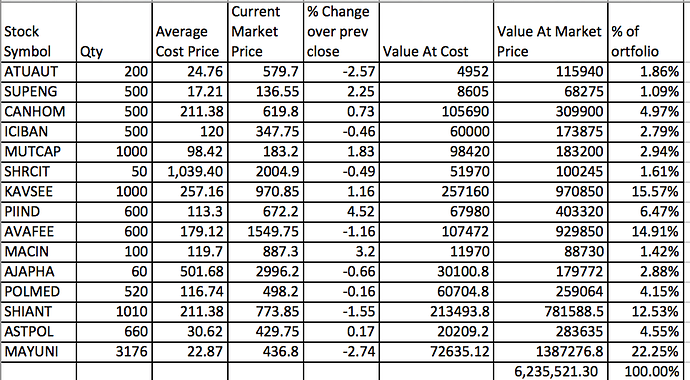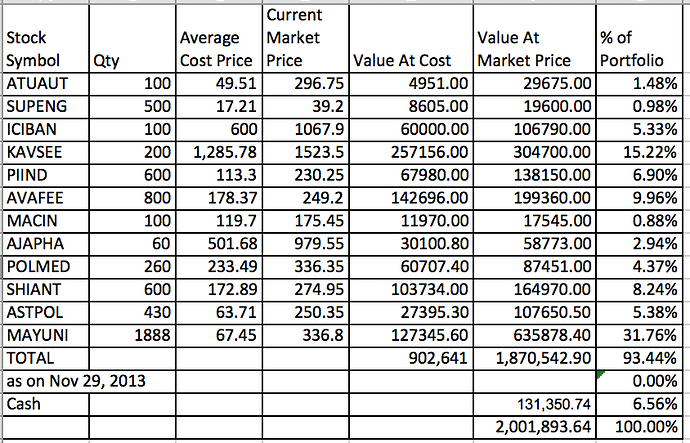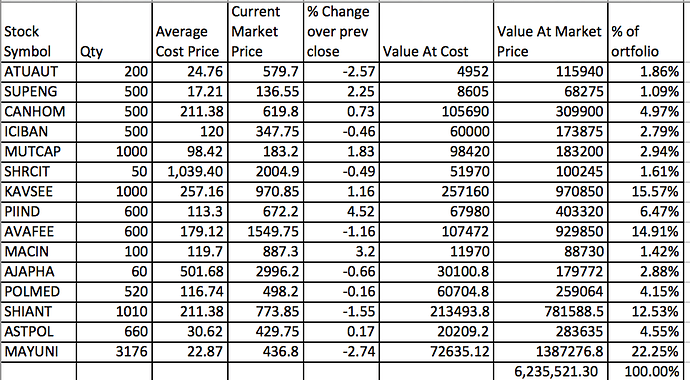@Alphin
Less than 10% of the person’s net worth is in equities, so he sleeps well :). He is also an Entrepreneur - so he is what can be called a “Calculated” Risk Taker.
@sandeeprawat
Yes. Not being in love with businesses that make you a lot of money. Everyone can aspire to get better here - admire & imitate Hitesh Patel like emotionless-investing quality. Building and getting better with a process that helps one spot and dissect Competitive Position/Industry stability getting weaker is key. A business introspection process that is repeatable, every 6 months.
@Divyanshu_Taneja
Premco Global seems like a good business with very decent earnings quality. Execution has got delayed and that has put off Mr Market. Once execution is back on track, growth should be back, making Mr Market happy again. But one should keep in mind this is a very small business - a micro cap. Liquidity is poor. Good execution in next 2-3 years, where it shows the capability of harnessing the opportunities before it, may take the business to the next level.
@umang_1991
There are no easy answers, here. One has to be very choosy, and very patient. It helps to keep reminding ourselves that Mr Market invariably gives us opportunities to buy 2-3 times every year, at reasonable valuations. Questions is: Do we have our homework ready - in what to buy at such times? Most folks end up confused. Folks could have easily bought Bajaj Finance 40% cheaper during the year, or an HDFC bank, IndusInd Bank, and many many more established, discovered names.
It’s about having a process and the discipline needed for long-term compounding. Having the courage/resolve to defer “instant gratification” impulse hard-wired in all of us - to stay away from fear and greed. It helps to surround ourselves with prolific idea generator guys like Ayush and Hitesh - so we can avoid that feeling of “missing out” and score one or two hits - they are never short of workable ideas, in any market!!
Its not about our performance in next 6 months, or next 2 years. Its about understanding our selves - our weaknesses/strong points, working closely together with folks who are different than us and compliment our style. Appreciating the work-ethic and hard work needed for success, developing a process that works (starts happening intuitively for the sincere learner - not the multi-bagger chaser) and ingraining the discipline to stick with that process - come what may 
So, no use making excuses - yaar, I don’t have the good fortune of starting in a bear market; make the most of what we have now; there are huge number of folks who have made extra-ordinary money this year from making non-consensus bets, lets learn something of that style. Appreciating different market cycles, observing what is happening keenly, having the openness to respect every successful investor style are attributes that will stand us in good stead, in near future.
I can guarantee - you, and every one of us will get a bear market, again!!
This is the best time to start preparing for it, in earnest. Goldmine of opportunity time!! Conserve Money, be cautious, examine businesses that are making money for us very critically. Keep taking some money off the table - progressively as the market keeps heating up! Keep working on our ability (and fund-chest) to ACT, when the market opportunity presents itself. It invariably will 
@Peabody
All of us struggle with this. ART of Selling is the most tricky, but one can progressively get better at this skill. I have found spreading the buying - over 2-3 years usually - as we develop conviction and watch management walking the talk works for me. Similarly spreading the selling - works beautifully too. This addresses the main point raised by you - why make that call - to what crazy levels the market will take my favourite business to?? We CAN’T know that.
All things being equal, for industry/business performing as expected - but valuations racing away - progressively taking money off the table, respecting that inner thing that makes us uncomfortable - as we see more froth developing - as the market goes crazier, works for me. I like to draw the line at higher than 2x fair valuation estimate (business category B+. A, A+. A++), to start selling something like 20% at a time. I DO NOT subscribe to the buy and hold quality growth business - through any price - ethos. It has huge opportunity costs. Something that goes down 50% has to go up 100% - just to recover!!






